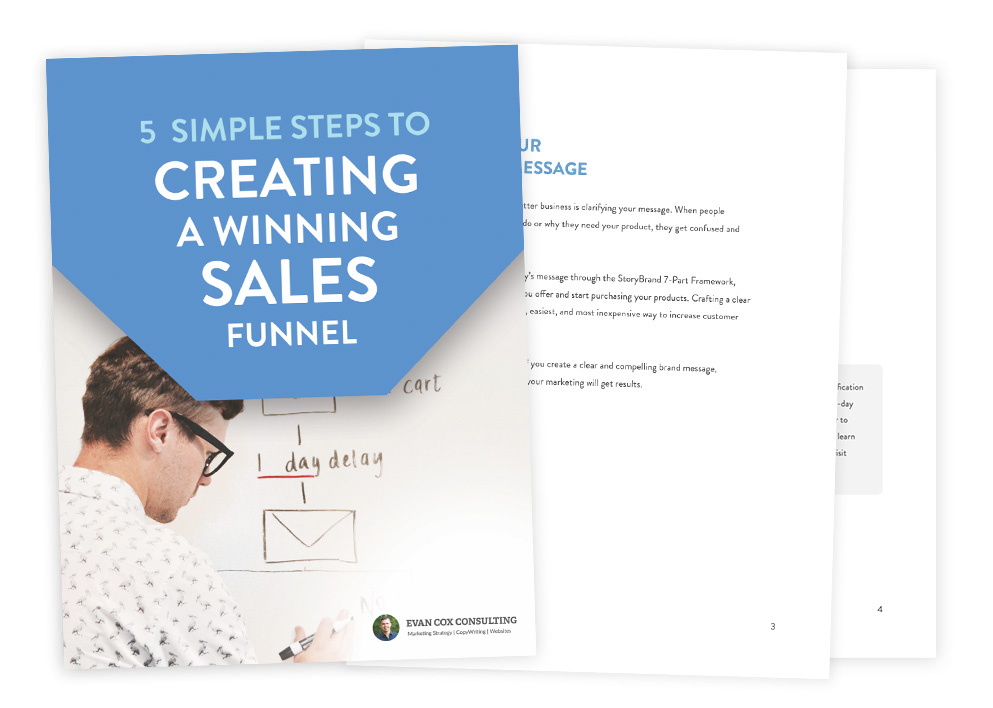Having an email marketing strategy is essential
It’s no secret that business and nonprofit leaders have an ever-increasing list of responsibilities.
With this reality in mind, it’s important to acknowledge that while every entrepreneur or executive director would love to invest in a full suite of marketing strategies, time and budget are often limited. It’s imperative to know what marketing efforts to prioritize and what should take a back seat until further notice.
Enter email. It’s the non-sexy pick of the marketing litter. While it might not get as much love as your website or the latest social media channel, the results are undeniable.
See The Ultimate List of Nonprofit StoryBrand Websites
The tech mogul, HubSpot, found through recent research that there’s an impressive $36 return on every $1 invested in email marketing. So, that begs the question…what would your organization be able to do if you saw that kind of ROI?
It also invites an adjacent question—what kind of intentional email marketing strategy does your small business or nonprofit have in place?
Your email list is one of your most important digital assets. If your marketing efforts only include sending out the occasional newsletter or sales pitch, you’re missing the mark. Your email list should be thoughtfully curated to build trust and add value in a way that leaves readers looking forward to your next update.
With that in mind, let’s unpack 3 simple strategies you should consider for your email marketing program.
3 email marketing strategies to consider
Approach #1: An evergreen, automated email sequence only
For brands getting acquainted with email marketing who are seriously strapped for time, this approach is simple and scalable. Select your email marketing platform of choice (Convertkit, Mailerlite, Keap and ActiveCampaign are a few of our favorites) and write a series of evergreen emails that go out weekly.
To use an analogy, this strategy acts like a conveyor belt where you enter new email addresses at the beginning, and they ride through the entire journey from start to finish.
There are definite pros and cons here, so let’s consider them both:
Pros
- You write every email once, add it to your email service provider, and it’s sent out automatically every week.
- You can write everything in batches so you’re never scrambling for that next email.
- You routinely show up in your reader’s inboxes on repeat, with little effort.
Cons:
- Everyone on your list won’t get the same email each week as they are likely at different points in your sequence.
- This strategy does not account for relevant news, current events, and timely updates you may want to share.
This simple, yet effective, strategy certainly has benefits and drawbacks. It’s a solid foundation to start with and then grow.
Approach #2: An evergreen, automated sequence + timely campaigns
This email strategy employs the stability and scalability of the first approach (timeless, evergreen emails) and addresses one of the biggest drawbacks to only taking that approach—timely campaigns.
While your automated weekly emails are deployed, this strategy acknowledges the importance of still sending relevant updates and offers, such as:
- Weekly or monthly newsletters that curate helpful updates
- Testimonials that highlight recent wins for customers or clients
- A thank you or appeal to major donors
- A timebound offer related to your service or product
For example, this strategy could look something like:
- 4 weekly automated, evergreen emails every month (timeless content that’s always relevant)
- 2-4 timely emails every month that share a story, offer, reminder, or update.
This email strategy employs the best of both worlds (timeless and timely content) and is a solid approach to build trust and invite your readers into a meaningful story.
Approach #3: Custom email campaigns + supporting automated sequences
There’s no denying this third approach takes a larger investment of time and energy. The good news about this approach is entering you into that sacred territory of seeing a $30+ return on every $1 spent that HubSpot touts.
Here’s an example of what this email strategy could look like for your company or organization:
- 4 weekly emails sent each month written with the intent to address the most relevant news, notes, and things to share
- Multiple automated email campaigns live and active speaking to unique segments of your email list
These unique, automated sequences complement your live content and could be built around:
- Product or Sales-Specific Sales Sequence (i.e. purchase a roof, etc.)
- Seasonal Sequences (i.e. weatherproof your roof, etc.)
- Staff or Volunteer Onboarding Sequence (i.e. onboard new team members with ease, etc.)
Select and customize your email marketing strategy
It’s important to note that these 3 approaches to email marketing are not the only ways to build trust and make a difference with your community. Identify the unique attributes and gifts of the people and leaders within your team and fine-tune your email marketing efforts accordingly.
It’s also helpful to remember that while there are a number of sleazy tactics that give the marketing and media world a black eye, we truly believe that marketing is simply an avenue to create and build more relationships.
That’s why it’s so important for you to build an effective marketing funnel that prioritizes email as a tool to engage and serve your community.
Helpful email marketing resources and reminders
Helpful email marketing reminders
- Find, select, and use an email marketing platform built to serve today’s and tomorrow’s needs. (it’s expensive to continually change from platform to platform)
- Utilize helpful frameworks, like StoryBrand and They Ask You Answer, to easily create content.
- Harness tools like ChatGPT, Jasper, and other AI software to generate email subject line ideas—not to simply take over the writing.
- Test your email subject lines with a program like CoSchedule’s Email Subject Line Tester to optimize your subject lines.
- Proof everything you write for typos and readability before sending with Grammarly and the Hemmingway App
Helpful email marketing resources
- Digital Marketer’s Everything You Need to Know About Email Marketing.
- HubSpot’s Ultimate Guide to Email Marketing
- Our Personal Favorite List of Marketing Resources
- Church Leaders: How to Build a Church Marketing Funnel
- Church Leaders: Church Marketing University’s Free Email & Marketing Tools
- Church and Nonprofit Leaders: Church Tech Today’s Top 5 Email Automation Sequences Your Church Should Set Up
Schedule a consultation
Ready to engage your email list with confidence? Let’s spend 15 minutes unpacking your priorities and talking through a game plan to get you that impressive ROI with your email marketing that HubSpot touts.


